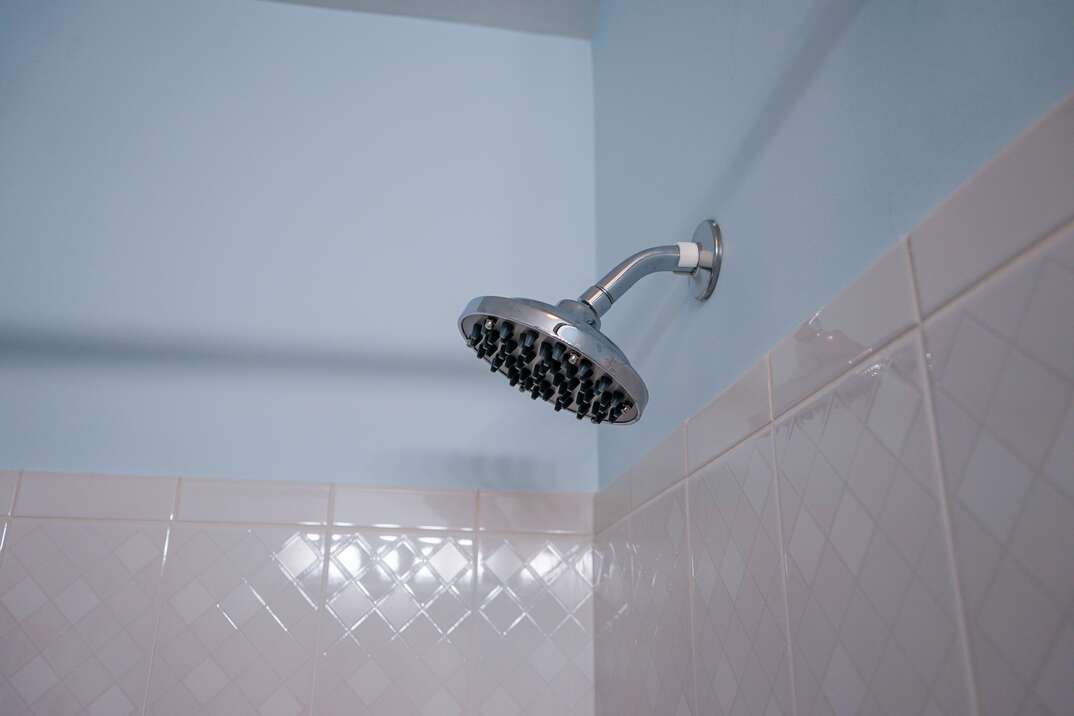Why Is My Showerhead Leaking When the Water Is Off?

A never-ending drip from your shower is annoying and can be a big waste of water.
Luckily, there are some common reasons for showerhead leaking — and many of them are easy to fix.
Why Your Showerhead Is Leaking
There are a few reasons why a showerhead leaks, even with the water turned off:
- A clogged showerhead
- Worn-out seals and washers in the showerhead or faucet
- Broken diverter valve
- Damaged cartridge valve
Lime and other minerals from your water can build up in a showerhead over time. A showerhead clogged with minerals can't drain quickly, which leads to dripping. If buildup is the problem, your shower should eventually stop dripping after turning off the water.
A shower that continues to drip indefinitely probably has a problem with parts such as valves and seals that prevent pressurized water from coming out of your faucet or showerhead. If these parts are damaged, water will leak through.
Once you figure out the cause, you can take steps to fix your leaky shower. Before attempting any repairs, turn off the water supply to the shower.
Unclog the Showerhead
If hard water and mineral deposits have created buildup, soaking the showerhead in vinegar overnight can help. You'll need to loosen the nut connected to the shower arm and remove the head.
Soak the showerhead in white vinegar for several hours or overnight. After soaking, use a sponge or old toothbrush to scrub out any remaining deposits. If your showerhead is old or very dirty, you can also consider simply replacing it.
While you have the showerhead removed, examine seals and washers for damage. Checking for damage can save you time if cleaning the showerhead doesn't fix your problem.
Replace Washers and Seals
All showers have rubber washers or O-rings, which can wear out over time. Showers with swiveling heads are especially prone to damage because the rubber O-ring can wear out as the showerhead is moved and rotated. Without in-tact washers and O-rings, pressure in your pipes can push water through the shower even while it's turned off.
You can remove rubber washers and O-rings from the showerhead once it's disconnected. Hardware stores sell washers as well as shower repair kits. You can take the old part to the hardware store to help find a new one that will fit your shower.
Sometimes, the washers can wear out in the shower faucet. Remove the screw in the faucet handle, which is sometimes found behind a decorative cap. Then, you can remove the faucet handle and stem with a socket wrench. You can then replace the rubber washers and seals in the faucet. A faucet repair kit can make getting the parts you need easier.
Repair the Diverter Valve
Diverter valves switch water between a bathtub faucet and the showerhead. If the diverter valve becomes worn or dirty, it can cause water to leak from the tap or showerhead.
Some diverter valves can be easily removed from the faucet. For others, you may need to unscrew a plate under or near the faucet to remove the valve. If the valve looks dirty or clogged with minerals, you can soak it in white vinegar. If it's old or broken, you may need to replace it.
Replace the Cartridge Valve
Cartridge valves control the flow of hot and cold water. These valves are often made from hard plastic that can wear out or even crack. Damaged valves can't control the water flow, which leads to a leaking shower head.
You need to remove the faucet or shower handle to expose the cartridge valve. There are many types of shower handles and faucets, so this can be one of the trickier steps. Generally, you'll need to remove the decorative faceplate and possibly the handles from the wall.
Cartridges are usually secured with a hex nut or clip. Once removed, bring the valve to a hardware store to help find a suitable replacement.
Elocal Editorial Content is for educational and entertainment purposes only. Editorial Content should not be used as a substitute for advice from a licensed professional in your state reviewing your issue. Systems, equipment, issues and circumstances vary. Follow the manufacturer's safety precautions. The opinions, beliefs and viewpoints expressed by the eLocal Editorial Team and other third-party content providers do not necessarily reflect the opinions, beliefs and viewpoints of eLocal or its affiliate companies. Use of the Blog is subject to the
Website Terms and Conditions.The eLocal Editorial Team operates independently of eLocal USA's marketing and sales decisions.



